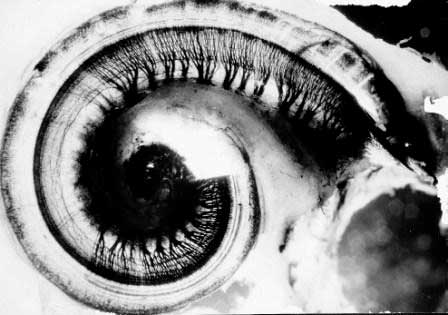Hearing Protection
Why protecting your hearing is so important.
Earplugs are the simplest way to protect your hearing from the demands of the music environment. The ETY ER20 range of generic fit earplugs is designed to offer quick and effective hearing protection for every budget. The custom ER (Etymotic Research) and ACS Pro range delivers protection specifically designed for your personal hearing state and needs. Thomas is an expert for hearing protection and can advise and produce these at a price that suits your budget.
Safeguarding your hearing
Musicians are constantly bombarded with sound – their own, and that of other musicians.As most of us hopefully know by now, music can become harmful if played at loud levels. A rock concert can be as loud as 120dB – and the sound levels in clubs and small venues can also be hazardous.
Respect for your hearing and preservation of it should be a major concern for any musician and clubber. If you have experienced tinnitus (ringing in the ears after a concert) or a temporary decline or shift in your hearing, then there may already be some level of damage to the inner part of your ear.
Here at Acoustix we want you to be aware of the potential dangers and encourage you to take positive action to protect your hearing. The good news is that with adequate hearing protection, you can still go out and perform live, or enjoy your favourite bands and DJs without missing a beat!
We want to raise awareness of the importance for musicians and performers to protect their hearing from damage caused by over-exposure to loud music. Wearing quality hearing protection should become a “must-do” for all musicians, DJs, VJs and sound engineers. Failure to do so can result not only in a musician suffering from permanent hearing damage, it could cut short a promising career – or even one in full bloom. Once your hearing is gone, it’s gone forever, so "Don’t Lose The Music!“
It is true that Beethoven continued to compose after he lost his hearing, but you can be sure that he regretted not being able to hear live music for the rest of his life.
How does the ear work?
Any source of sound sends vibrations (sound waves) into the air which are picked up by your ear and funneled into your ear canal. In there, they will strike the eardrum and cause it to vibrate. These vibrations are then transmitted through the tiny bones in the middle ear to the auditory hair cells of your inner ear, and further on to the part of your brain which interpret these vibrations as sound such as music, speech or noise.When the sound is too loud, it may kill the hair cells in your inner ear; as the exposure time and/or the loudness level increases, more and more hair cells will get destroyed. As their number decreases so does your hearing, and there is no way to restore dead hair cells as they cannot be healed or regenerated. The damage to your hearing is now irreversible and results in permanent hearing loss.
When does sound become dangerous?
People differ in their sensitivity to sound. As a rule of thumb, if you have to shout over background noise to make yourself heard, this background noise may be capable of doing harm as the level will be approximately 85dB(A) or more. The higher the sound levels, the higher the risk of potentially damaging your hearing.
Very loud sounds of short duration such as gunfire or an explosion can be painful and can produce immediate severe-to-profound if not complete permanent hearing loss. On the other hand, noise levels between 80 -120dB can produce painless damage to your hearing and you may not be aware of it at the time, but you may be noticing it too late, when it is done. The longer the exposure time the higher the risk of damage to your hearing.
When should I wear hearing protection?
The extent of damage caused to hearing depends on the amount of noise energy that the ear has been exposed to over a period of a day. In New Zealand the exposure standard is set at 85dB(A) for an 8 hours period. For every 3dB increase, the acceptable time of exposure must be halved.You should wear hearing protection when you are in excessively noisy environments with noise levels above 85db(A).The information below shows how easy it is to exceed maximum exposure time:
Level of noise in dB(A) Maximum daily exposure time – unprotected
| 85dB | 8 hours |
| 91dB | 2 hours |
| 97dB | 30 minutes |
| 103dB | 7 minutes |
Some noise level examples (estimates):
| Noise level | Unprotected | Protected |
| 60dB Speech | Unlimited | Unlimited |
| 70dB Office | Unlimited | Unlimited |
| 85dB Busy traffic | 8 hours | Unlimited |
| 91dB Pub | 2 hours | 64 hours |
| 100dB Factory | 15 minutes | 8 hours |
| 106dB Nightclub | 4 minutes | 2 hours |
| 140dB Gunshot | None | 1.5 minutes |
So spending any longer than 4 minutes in noise of 106dB(A) is considered dangerous by the NZ Industrial standards and wearing hearing protection is essential!
(Source – “Noise induced hearing loss – a guide for Medical Practitioners”)
How can I tell if my hearing is already damaged?
Hearing loss usually develops over a period of time – generally it takes years – and since it is painless and gradual, you might not notice it at first. Signs of damage are when the noise hurts, or makes your ears ring, or slight deafness for some time after the exposure to loud sound. Hearing loss associated with excessive exposure to sound can occur at any age. Regular hearing tests will provide you with up-to-date information on your current hearing levels.
Images of an inner ear (cochlea):
Normal inner ear:

No indication of any damage to the inner ear.
(Scanning Electron Micrograph H.Engstrom/ B.Engstrom – courtesy of Widex APS)

Damaged inner ear:

Damaged inner ear – notice that the innervations in the mid region of the cochlea is blank or damaged.
(Scanning Electron Micrograph H.Engstrom/ B.Engstrom – courtesy of Widex APS)

A micrograph demonstrating the damaging effect of noise to cochlear sensory cells. The inner hair cells (IHC) are seen forming one row with well preserved sensory hairs, while the outer hair cells (OHC) are severely damaged with many cells missing and other cells showing irregularly arranged cilia.
(Scanning Electron Micrograph H.Engstrom/ B.Engstrom – courtesy of Widex APS)
